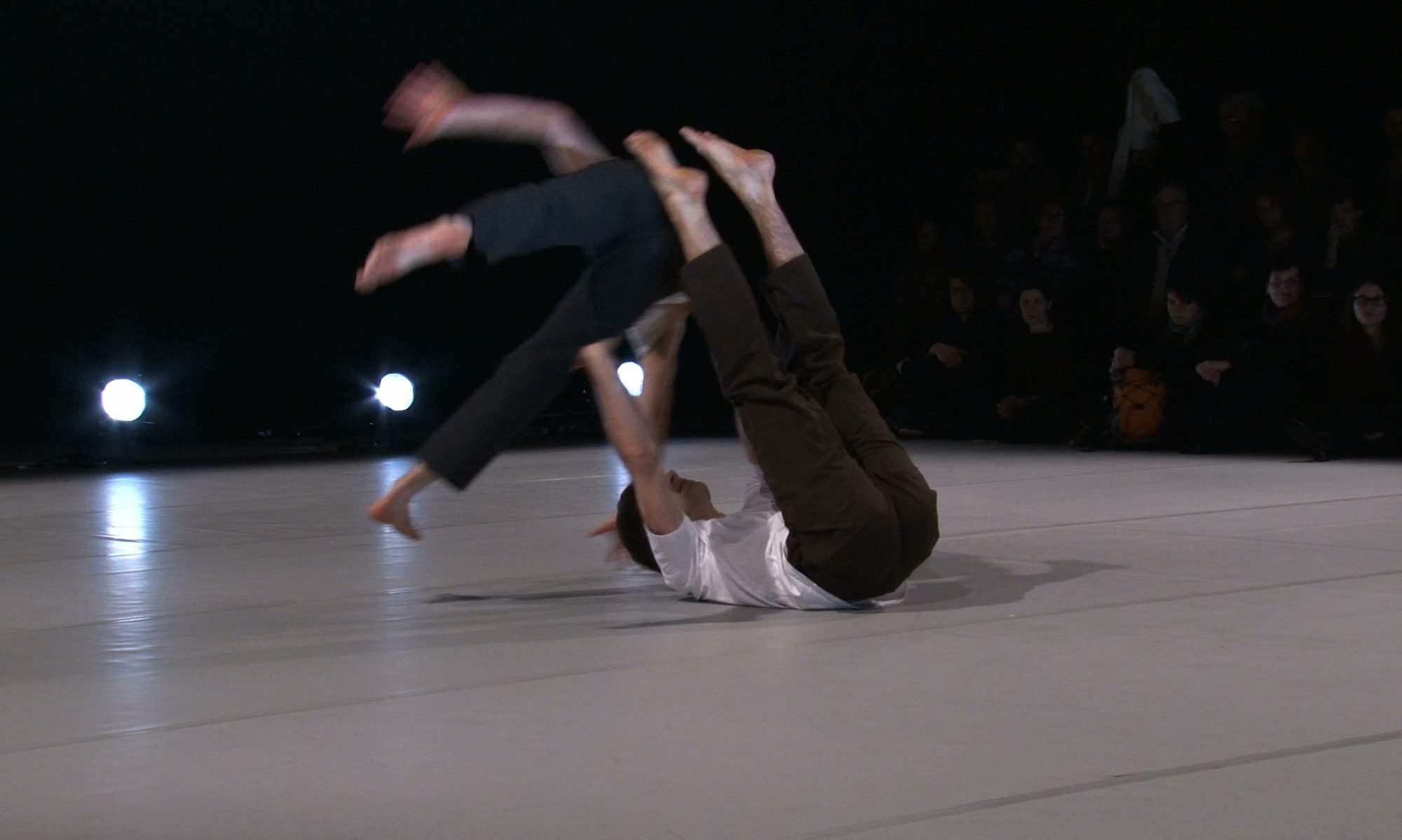Art is that which provides no comfort, gain, or reward to its creator.
European English
Due to whatever reasons (that I do not wish to go into), English is the dominant language of communication within the arts in Europe. Maybe this is only true for dance and performance. I have more exposure to that world than the worlds of painting, sculpture, etc. (I do not want to say visual art as dance, too, is a visual art).
The English used in the dance art world is slowly evolving to become another dialect. It is neither the bastard English of the United States or the proper Queen’s English of the United Kingdom. It is becoming its own thing developed by the collective use of non-native speakers and ex-pats.
I became aware, or perhaps more aware, of European English after seeing a performance at HAU 3 in Berlin this past May. The piece was Pulling Strings by Eva Meyer-Keller. It is quite an intricate piece, a feat of organization. Quotidian objects are raised, lowered, and activated, sometimes to comical effects. My favorite moment was the spinning push-broom. But I digress.
What caught my mind(eye) was the title – Pulling Strings. Yes, that is literally what she and her collaborator did. They pulled strings to activate the objects. But the phrase pulling strings has a nefarious, manipulative aspect to it. The phrase conjures up back room political machinations. I did not see how the piece connected to such an idea. The description on her website gave no indication that the piece was related to the manipulative meaning of the phrase. As far as I could tell, Keller was not dealing with that meaning of the phrase, just the literal one.
The use of the phrase pulling strings, in a way, has become pure meaning, a literal phrase. Does this mean, then, that people who do know that meaning or use of the phrase are saddled with extra context, context or meaning that has nothing to do with the piece?
Another student, who is French, in the SODA program did a piece in which she used several phrases with the word white and several kinds of animals – white rabbit, white horse. I can’t think of other ones at the moment. She was unaware of the white rabbit of Alice in Wonderland or in the Jefferson Airplane song(also the same rabbit), White Rabbit. Whenever I hear the phrase white horse I think of that great song by Laid Back, White Horse. They’re Danish, by the way.
My larger question is when a language is used by a non-native speaker how aware of the idioms and cultural context of that language should s/he be? Can the artist ignore all that and use the language as a context-free tool for expression? I would think that in a scene that is obsessed with context and dramaturgy, artists would have a greater concern for the use of language.
Or has all context been removed from English in continental Europe?
Presence vs. Awareness
Dramaturgs
Do chefs use dramaturgs?
Do sculptors dramaturgs?
Do conductors use dramaturgs?
Do pastry chefs use dramaturgs?
Do painters use dramaturgs?
Do fashion designers use dramaturgs?
Do baristas use dramaturgs?
Do composers use dramaturgs?
Do oenologists use dramaturgs?
Do perfumers use dramaturgs?
Do bartenders use dramaturgs?
Choreo vs. Impro
Choreography is knowing the other’s response to your actions.
Improvisation is not knowing the other’s response to your actions
TanzNacht Berlin 2012
If the framing doesn’t elucidate how these pieces are more than just iterations of our current genre of dance, then the pieces do not become anything more than an aesthetic experience. Either you like it or you don’t. Maybe that is what the creators are after – contemporary dance as entertainment.
Somatic – Compositional
Reinventing the wheel
The good thing about reinventing the wheel is that you might invent a better one.
a similar thought here
Subject vs. Object
Contact Improvisation has become a dance of the subject, not the object.
discuss
There is no theory.
There is no theory.
There is only practice.
What you do is your practice.
Whether you are sitting at a table or lying on the floor or doing push-ups or aligning your heels with your sitz bones or quoting dead lovers of knowledge, you are engaged in a practice. If you are repeating it, you are rehearsing it. If you are rehearsing it, it is your practice. If you are sitting around a table discussing the possibilities of choreography, you are practicing sitting around a table discussing possibilities. Why are you not stretching or sharing weight while discussing the possibilities of choreography?
It has been scientifically proven that those who sit more live shorter lives.
Do you want your practice to lead to a shorter life span?
one article
another article
a third article
This leads me to another point. Philosophy. Philo coming from the Latin for love and sophy from sophia mean knowledge or wisdom. Therefore, someone who loves knowledge is a philosopher. Anyone who is involved in a practice is therefore a philosopher. The more rigorous the practice the more rigorous the philosophy. Therefore anyone who has an interest, whether it’s comic books, ballet, baseball, anatomy, is a philosopher. He or she loves knowledge of a sort. It might not be knowledge that someone else finds particularly useful or valid, but it is still knowledge. Whether Green Lantern could survive an attack by the Silver Surfer is just as philosophical a discussion as an aesthetic and textual examination of King Lear.
A chef is a philosopher.
A soccer coach is a philosopher.
A hair dresser is a philosopher.
A rancher is a philosopher.
An eye doctor is a philosopher.
A second grade teacher is a philosopher.
A Shiatsu practitioner is a philosopher.
A forest ranger is a philosopher.
A stat quoting baseball fan is a philosopher.
A contact improviser is a philosopher.
